
 |
|
|||||||
| Home | Forum | Online Store | Information | LJ Webcam | Gallery | Register | FAQ | Community | Calendar | Today's Posts | Search |
 |
|
|
Thread Tools | Display Modes |
|
|
#681 |
|
Member
Join Date: May 2014
Location: Redondo Beach, CA
Posts: 45
|
https://www.youtube.com/watch?v=GNvhV-v8HOU
__________________

|
|
|

|
|
|
#682 |
|
Senior Member
Join Date: Dec 2010
Posts: 228
|
Floating livewell from pipe insulation, zip ties, 3 gallon bucket, and screw on top...All parts from home depot for no more than 20.
Kept macs live all day. Easy to put bait in and I drilled holes on top so it would get lighter when lifted on the kayak if I needed to boogie. Enough water inside to keep fish alive before posting up on the next stop. Then tossed it back in the water to float filling up all the way around the holes to give bait more swim space. No seals ever messed with it. I've upgraded to a diy livewell using a bilge pump... This would be better in the bay or lakes. Just a cheap optionuploadfromtaptalk1461297931223.jpguploadfromtaptalk1461297967557.jpguploadfromtaptalk1461298002079.jpguploadfromtaptalk1461298045841.jpg Sent from my SM-N900T using Tapatalk |
|
|

|
|
|
#683 |
|
Senior Member
Join Date: Sep 2015
Location: The I. E.
Posts: 353
|
Thanks! Thank really great. Might try it.
|
|
|

|
|
|
#684 | |
|
Manic for Life
Join Date: May 2015
Location: San Diego
Posts: 839
|
Quote:
The Harbor Freight electric hoist looks like a good fit for your project.
__________________
Another ho-hum day in Paradise |
|
|
|

|
|
|
#685 |
|
Member
Join Date: Dec 2011
Location: Tehachapi
Posts: 81
|
Magnetic transducer mount
1 1/2" PVC. Magnets from an instant screen.
|
|
|

|
|
|
#686 |
|
Senior Member
Join Date: Apr 2010
Posts: 6,856
|
Great start................however, I can't imagine all of the crap that will get hung up on that rod let alone the rust that it will build after a few trips. Why did you not use galvanized material?
__________________
 www.facebook.com/Teamsewer |
|
|

|
|
|
#687 |
|
Member
Join Date: Dec 2011
Location: Tehachapi
Posts: 81
|
Crap!
I didn't think about the crap. The bolt and nuts are 2"x 1/4" stainless. I'm hoping it works. If something hangs up, it will just fall away and my signal will get funky. Then I will re-attach.
slow process shaping the PVC so I hope it works. |
|
|

|
|
|
#688 |
|
Member
Join Date: Dec 2011
Location: Tehachapi
Posts: 81
|
Everybody makes these
I know everybody has made these to death, but I'm pretty happy with them.
|
|
|

|
|
|
#689 |
|
Senior Member
Join Date: Nov 2014
Location: SGV
Posts: 849
|
Neat design. So you just slid the outer layer of the paracord onto the weed whacker line?
|
|
|

|
|
|
#690 |
|
Member
Join Date: Dec 2011
Location: Tehachapi
Posts: 81
|
|
|
|

|
|
|
#691 |
|
Junior
Join Date: Nov 2015
Location: San Marcos, CA
Posts: 28
|
|
|
|

|
|
|
#692 |
|
Senior Member
Join Date: Mar 2005
Posts: 116
|
I haven't posted on here in a while, so I'll share a few things I made. The first is a fly rod holder. I have some extra RAM accessories so I made it for a RAM 1.5" ball mount. I originally used a bungee cord and lashing hook (OEX) to secure the rod to the rod holder. Recently I modified it to have a rotating collar, like the Scotty Power Lock.
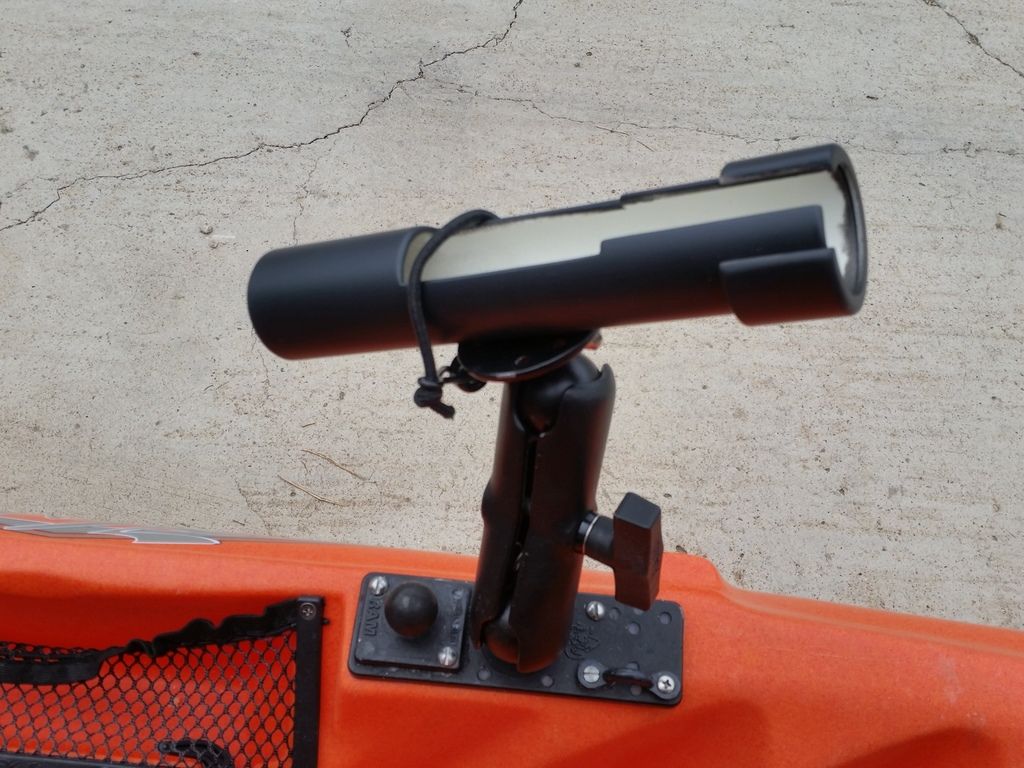 The next are check valves. These will be used in place of the seat plugs in my Hobie Adventure. The parts list: 3/4" PVC male adapter, 3/4" PVC pipe, syringe plunger, and 1/8" SS rod. The video I saw used a 3/4" acrylic ball, but I couldn't find any for the right price. Instead, I found a 6-pack of syringes at Party City for $7. I cut the rod at the indentation, then filed the fins of the plunger so it would slide in the 3/4" PVC pipe. Do not push the pipe all the way into the adapter because you want to allow a gap for more water to pass through. The hole I drilled in the pipe allows the plunger about an 1/8" of clearance from the top. The threaded portion was sawed off above the last 3 threads. 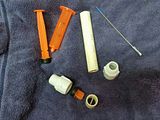 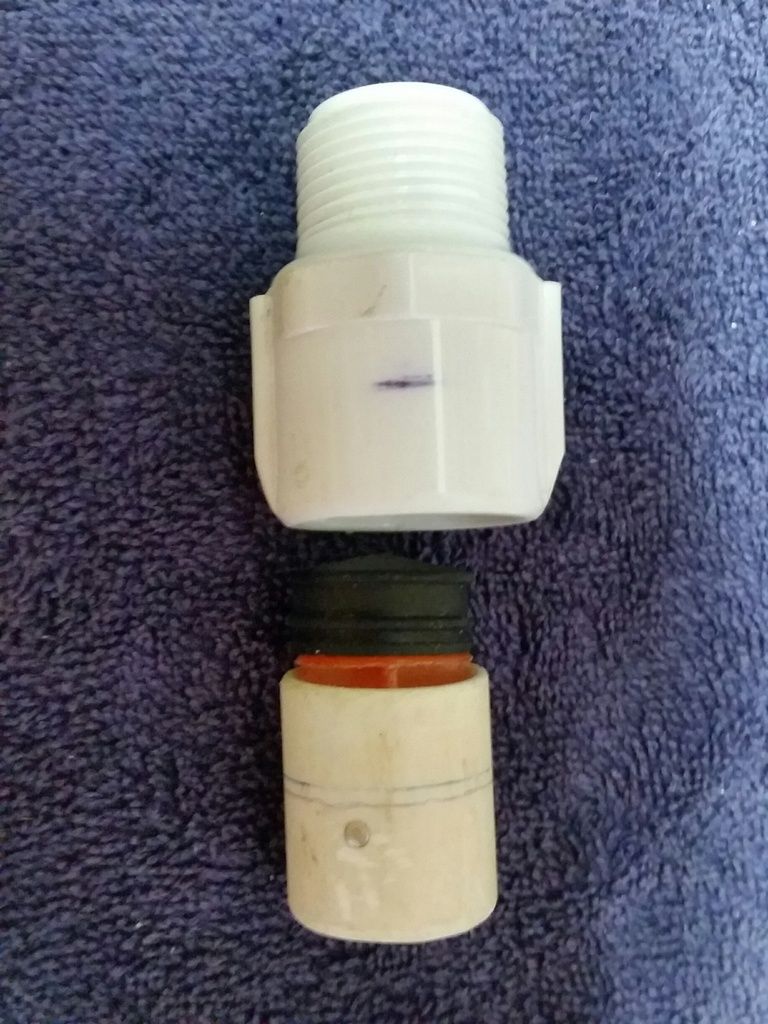
|
|
|

|
|
|
#693 |
|
Senior Member
Join Date: Mar 2005
Posts: 116
|
Seat Riser
The Adventure/Islander seat is below the water line, so the seat plugs must be in place. When water comes over the side, which is frequent, you end up sitting in a pool of water. I found a video on YouTube (AI Seat Riser) that addressed this problem. He used 2-part foam (8 lb) to build up the seat area about 1.5" - 2". Since the water line is now below the seat, he replaced the seat drain plugs with 3/4" PVC pipes. Watch the video if you are interested in making one.
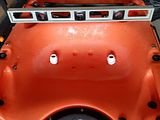 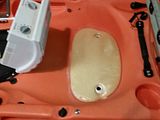  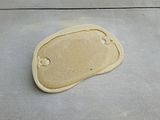 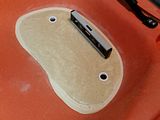 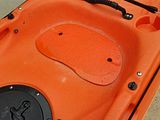 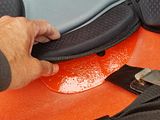 In my build, I used the check valves in place of the 3/4" pipes (see my previous post). The keys to remember are: 1) be sure kayak is level, 2) use a release agent on the seat, 3) work fast with the foam since it will set up within 3 - 4 minutes, 4) concrete needs to be rough in order to quickly shape the foam, 5) before painting, use acetone to remove any chemical residue from the foam. A coat of Polyurethane over the paint will make it more durable. Since the seat covers the drain holes, I added channels to the seat riser so the water will be able to drain. 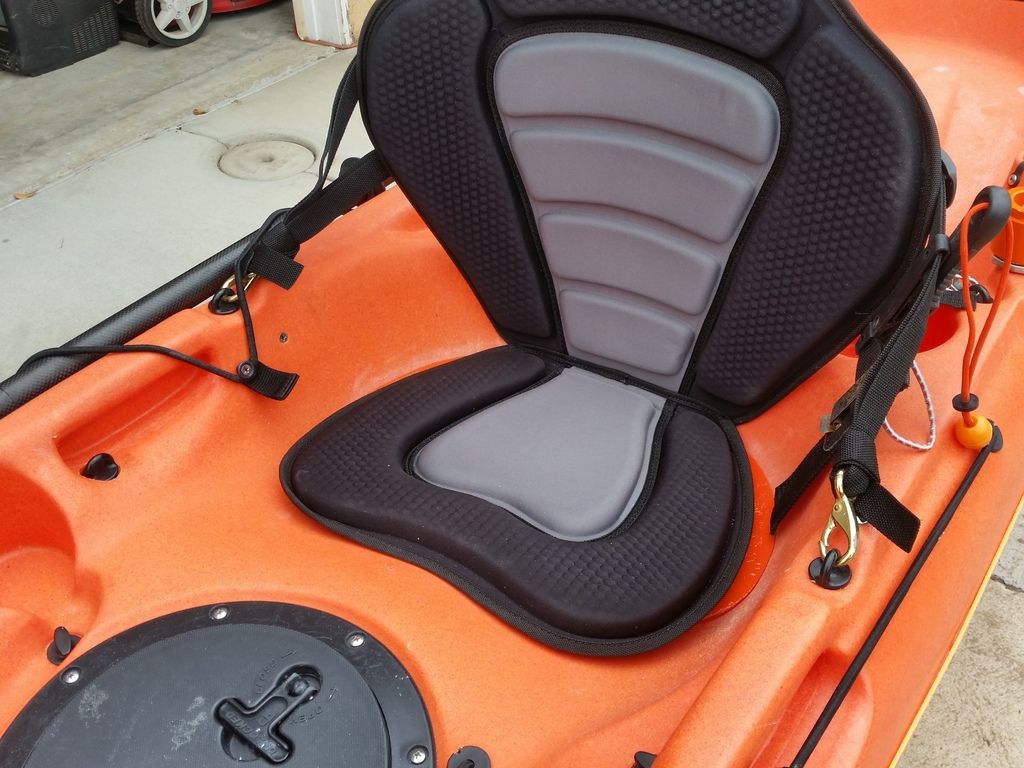 Due to the seat being higher, the mounting position for the back rest was also raised. I removed the bungee screw-in plugs used for the paddle keepers and replaced them with the D-ring plugs. The backrest is more comfortable clipped here. Plus it is easier to enter and exit the kayak with the shorter straps. The last modification was to secure the paddle bungee. It is now using a part of the Islander (sail) rigging. I tested it out on a snotty day on the bay. As was expected, a lot of water came over the side, however, it drained out just as it was designed. The only negative was the hardness of the seat. I'll have to go back to sitting on my kneeling pad. Since I no longer need it under my seat (to raise me up), I'll now use it on top of the seat. |
|
|

|
|
|
#694 |
|
Sea Hunter
|
What does a 72in tent pole shrink wrap a pvc cap tread and one eye have in common
Bingo home made bait rod
__________________
Duke Mitchell |
|
|

|
|
|
#695 |
|
Senior Member
Join Date: Jun 2016
Location: Escondido, CA
Posts: 130
|
Leaders/Rigs
I find myself changing out a rig from time to time while out there. What to do with those rigs and leaders? You certainly dont want the tangling up or getting snagged on other things - like your leg, feet, pedals... So, I simply spool them up on these. Its a nice way to keep them all arranged, undamaged, easily re-usable, and readily available.
https://www.amazon.com/gp/product/B0...?ie=UTF8&psc=1 |
|
|

|
|
|
#696 |
|
Senior Member
Join Date: Jan 2012
Posts: 2,526
|
This is my original battery connection
There aren't many like it , cause this one is mine .
 . It has seen many a battery . The first replacement I bought was similar in dimensions and capacity which was rated 7 amp 6 Vlt. I got that battery from fry's electronics for relatively cheap . Yes, 7 amp . That was a long time ago. Of course hobie has upgraded since then to a standard equipped 10 amp battery. Tbe current battery I am using is a Bioenno LIPO4 12 amp. This battery will last me all day and not slow on flow of pump, . It has seen many a battery . The first replacement I bought was similar in dimensions and capacity which was rated 7 amp 6 Vlt. I got that battery from fry's electronics for relatively cheap . Yes, 7 amp . That was a long time ago. Of course hobie has upgraded since then to a standard equipped 10 amp battery. Tbe current battery I am using is a Bioenno LIPO4 12 amp. This battery will last me all day and not slow on flow of pump,
|
|
|

|
|
|
#697 |
|
Senior Member
Join Date: Jan 2012
Posts: 2,526
|
Finishing up
What I've realized about these connections, is that they are bulletproof. Even with little care or attention, I have not had any problems. This connector is probably from an 09-10 outback, which was my first Hobie kayak. Yes, I started out on the Dark Side. Anyways, after having so many issues with my fishfinder, I decided to try this connector for my battery power source. I ordered a couple sets of connectors from a dealer and head them shipped. The complete package lists for about 20.00$. The package includes male/ female ends and pre-greased wire caps that even have a dust cap for the back of screw on wire connector . I have never seen this before. To prevent and issues, I also put some marine goop to insure a water tight seal at connection . This should give trouble free operation for more that a year of hard use. Ideally the life of your fish finder. Easily achievable if you do like me, and replace your unit every 6 months.
 . .
|
|
|

|
|
|
#698 |
|
Senior Member
Join Date: Jan 2012
Posts: 2,526
|
Some pics
Battery in water tight container is for my hobie tank and is s 12 amp Lipo. This battery will run all day.
|
|
|

|
|
|
#699 |
|
Senior Member
Join Date: Jan 2012
Posts: 2,526
|
Guess rest of pics did not come through
Standard
|
|
|

|
|
|
#700 |
|
Senior Member
Join Date: Jan 2012
Posts: 2,526
|
Caps
If wires
|
|
|

|
 |
| Tags |
| kayak fishing inovations, kayak rigging ideas |
|
|